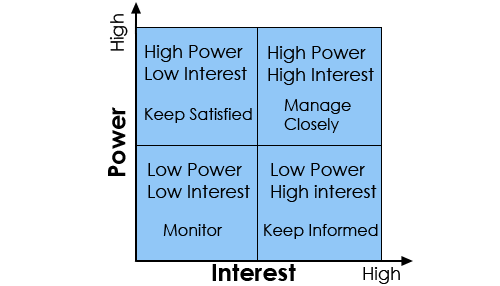Every business needs to invest plenty of time and effort in stakeholder analysis techniques. This is mainly because projects comprise multiple stakeholders, who can be grouped into different categories. Some stakeholders tend to have more power than the rest. In this case, their decisions will have a bigger impact on the business than anyone else’s opinion. And, stakeholders with less power are expected to fall in line with those with more. With this being said, here are a few stakeholder analysis techniques you need to be aware of. These techniques keep reminding everyone that not all stakeholders are the same. And, the influence each on has in projects is different.
Power versus interest!
This is one of the most common stakeholder analysis techniques. This is where the stakeholders who have the most power will want to keep their interests satisfied. And, when their interests dwell deep into the project, they prefer being managed upfront. In this category, the high-power and high-interest stakeholders will need details on a daily basis. Even when the stakeholders have less power, they will want to be informed. This is much different from being managed closely.
Influence and impact
Next in the list of stakeholder analysis techniques would be the influence and impact grid! This is quite similar to the power and interest grid. However, influence defines how active a stakeholder is in the project. It also defines how much a stakeholder can force the rest of the company into a decision. On the other hand, impact identifies the stakeholder’s ability to bring a result to the table. The primary aim of this grid is to prioritize the actual value of stakeholders.
Power and influence
The lessor known, but highly valued stakeholder analysis technique would be the power and influence grid. This is much similar to the power and interest grid. Maybe, this is why the power-influence grid is often forgotten. As declared previously, the influence determines the overall activeness of the stakeholders, while the parameter “power” defines the overall authority of the members.
Importance and influence
Another grid that is similar to the power stakeholder analysis techniques would be the importance influence grid. Here, stakeholders with high interest and more power are analyzed a little deeper. After all, the decisions made by these professionals have the biggest impact on the business.
Salience model
The last item in the list of stakeholder analysis techniques would be the salience model. The role of this model is to boost the importance of “powerful” stakeholders. Three factors involved in the salience model are: urgency, power and legitimacy.



